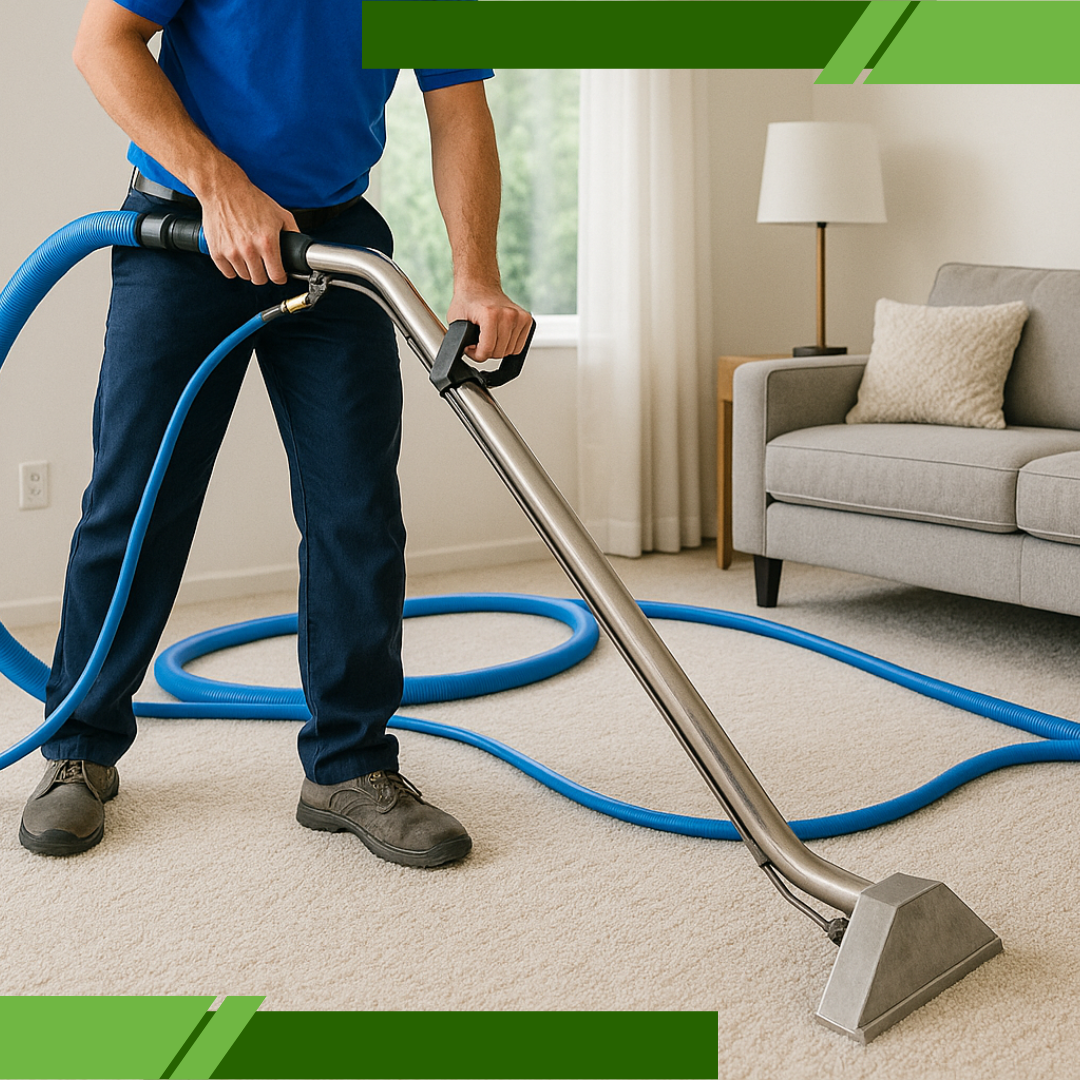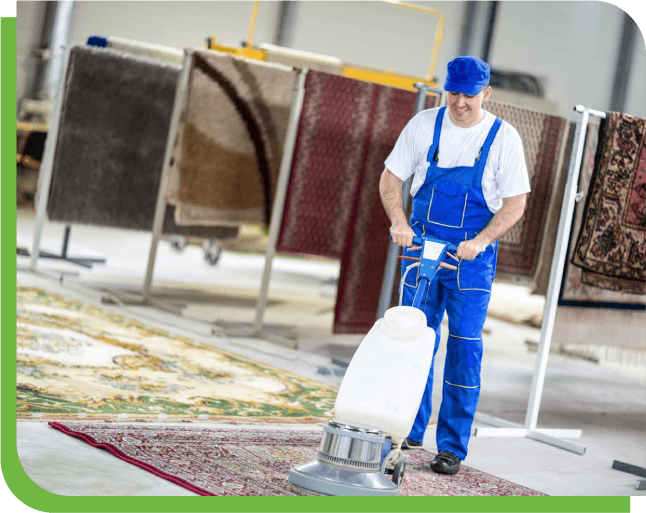Get in touch
Fill this up to proceed

We are committed to providing a world-class carpet, rug, upholstery, drapery or mattress cleaning services that will open your door to a happier and healthier green indoor environment.

The idea of a clean home has changed over time. It’s not just about shiny countertops and lemon-scented floors anymore. There’s something new and exciting: home microbiome cleanliness. This approach means understanding and caring for the living things we can’t see—tiny organisms like bacteria and fungi that live all around our homes.
Our homes are like small ecosystems. Just like a garden needs good bugs and soil to grow, our houses need good microbes to stay balanced. The right balance of helpful and harmful microbes can make a big difference in how healthy your home is. That’s what home microbiome cleanliness is all about—keeping the good microbes and getting rid of the bad ones.
You don’t have to do all this on your own. If you want experts who understand how to clean safely and support the microbiome in your home, check out this trusted carpet cleaning service that specializes in healthier home environments.
We’ve been taught to clean by killing every germ in sight. But when we use strong sprays and harsh cleaners, we remove both the bad and the good. It’s like using a weed killer that destroys the whole garden, not just the weeds.
Home microbiome cleanliness teaches us to clean in a smarter way. Instead of wiping out everything, we support the good microbes that naturally fight off the bad ones. These helpful microbes actually work as your allies, making your home healthier every day.
When we understand home microbiome cleanliness, we begin to clean with balance. It’s not about being germ-free; it’s about having the right germs.
Yes, there really are good microbes living in your home—and they’re doing a lot of work behind the scenes. Supporting them is one of the key parts of home microbiome cleanliness. These tiny organisms protect your body by pushing out harmful bacteria, clean the air naturally by breaking down unwanted particles, boost your immune system just by being around, and help reduce allergies and asthma by balancing dust and mold.
Home microbiome cleanliness means encouraging these tiny helpers to stay. When your home has the right kind of microbes, it becomes a space that truly supports your well-being—whether you live in a small apartment or a larger space in Studio City.
Think of your home as having its own version of a gut. Just like you feed your gut with good food and water, your home needs fresh air, natural materials, and friendly bacteria to thrive. Home microbiome cleanliness starts with these small changes in how you live. Choosing cleaners made with simple, safe ingredients, opening windows daily to let fresh air flow through, using natural materials like wood, wool, or cotton in furniture and decorations, adding indoor plants to bring in helpful microbes, and letting pets roam are all ways to support home microbiome cleanliness. By taking these steps, you’re protecting the balance of life inside your house.
It’s easy to get started with habits that help your home’s tiny ecosystem. Avoid using bleach or antibacterial sprays daily, open your windows for at least 20 minutes a day, wash your hands with regular soap instead of antibacterial, choose wool and cotton for rugs and bedding, use natural cleaning products like vinegar and baking soda, get a vacuum with a HEPA filter to trap dust and microbes, and add houseplants like a snake plant or spider plant.
Each of these steps plays a role in supporting home microbiome cleanliness. They help maintain a balance between the helpful and harmful microbes in your living space—something many homeowners in Studio City are now starting to value.

Now that you know what home microbiome cleanliness means, let’s go through each part of the house and see what this looks like in action. In the kitchen, use vinegar and baking soda instead of strong sprays, clean cutting boards with lemon and salt, and store leftovers safely but skip over-sanitizing everything. In the bathroom, swap out bleach for natural cleaners, wipe down surfaces daily with water and mild soap, and add a low-light plant to help air stay clean. In the living room, spray cushions and rugs with eco-safe products, let in light through windows for natural bacteria to grow, and pick furniture made from real wood instead of plastic.
In the bedroom, wash sheets in fragrance-free detergent weekly, avoid artificial air fresheners, and try bedding made from natural fibers like wool or cotton. At entryways, place doormats at entrances to trap outside dirt, leave shoes at the door to protect your home microbiome cleanliness, and add a small plant nearby to bring in fresh microbes.
These tips make it easy to keep your home both clean and alive with helpful microbes, and they’re especially easy to apply if you work with Carpet Cleaning Studio City professionals who understand how to maintain microbial balance.
The difference between traditional cleaning and microbiome-based cleaning is significant. Traditional cleaning tries to kill all microbes—good and bad—leaving your home sterile and often filled with strong chemical smells. Home microbiome cleanliness is about supporting good microbes and gently reducing the bad ones, keeping your home naturally balanced and healthier in the long run. With the old way, you get short-term cleanliness. But with home microbiome cleanliness, you build long-term health and better air quality.
Many people still believe things about cleaning that just aren’t true. The truth is, not all germs are dangerous—many are helpful and protect you from harmful ones. Stronger chemicals do not always mean better cleaning; harsh chemicals destroy good microbes and may hurt your health. Pets do not always bring in dirt and sickness; they can carry helpful bacteria that improve your home’s microbiome. A clean house does not have to smell like chemicals; a healthy home smells fresh and natural. Understanding these facts helps you make smarter choices for your space and your health.
If you’re focused on home microbiome cleanliness, avoid bleach unless absolutely necessary, don’t use air fresheners with synthetic fragrances, say no to antibacterial soaps and wipes for daily use, and skip furniture made from plastic or vinyl. Instead, air out your home every day, use wall panels made from natural wood, clean with vinegar, baking soda, and lemon, and try probiotic home sprays designed to support good bacteria. Making these changes helps create a healthier home that supports your body and your peace of mind—something more families in Studio City are adopting.
Even your walls can play a role in home microbiome cleanliness. Some materials support good microbes better than others. Shiplap allows airflow, tongue and groove planks look clean and stay dry, board and batten adds style while being breathable, beadboard handles moisture well, and reclaimed wood is eco-friendly and often filled with natural microbes. Choosing wood panels over synthetic ones supports a more balanced, natural space. It’s one more way to make your home not just beautiful, but truly healthy too.
We’re now in a new era where clean doesn’t mean chemicals. It means balanced, fresh, and alive. Home microbiome cleanliness is the way forward—for your home, your health, and your family’s well-being.
So next time you clean, ask yourself: “Am I supporting a healthy home?” If the answer is yes, then you’re already part of the change. Welcome to the new world of clean—where health and home go hand in hand. And if you’re located in Studio City, you can trust this local service to help bring balance and wellness to your home.
Use natural cleaners like vinegar, baking soda, and probiotic sprays instead of harsh chemicals. These support home microbiome cleanliness by preserving helpful bacteria.
Yes, pets introduce healthy microbes into your living space that support immune health. They naturally contribute to a more balanced indoor microbiome.
Open windows daily, avoid antibacterial products, and use eco-friendly cleaning methods. These simple actions create a healthier environment over time.
Absolutely—natural wood surfaces help support beneficial microbes better than plastic or vinyl. Choosing breathable materials like shiplap or reclaimed wood encourages microbe balance.
Yes, when done by eco-conscious providers using gentle, non-toxic products. Green cleaning services focus on supporting home microbiome cleanliness without harming your indoor environment.

We are committed to providing a world-class carpet, rug, upholstery, drapery or mattress cleaning services that will open your door to a happier and healthier green indoor environment.
We are committed to providing a world-class carpet, rug, upholstery, drapery or mattress cleaning services that will open your door to a happier and healthier green indoor environment.